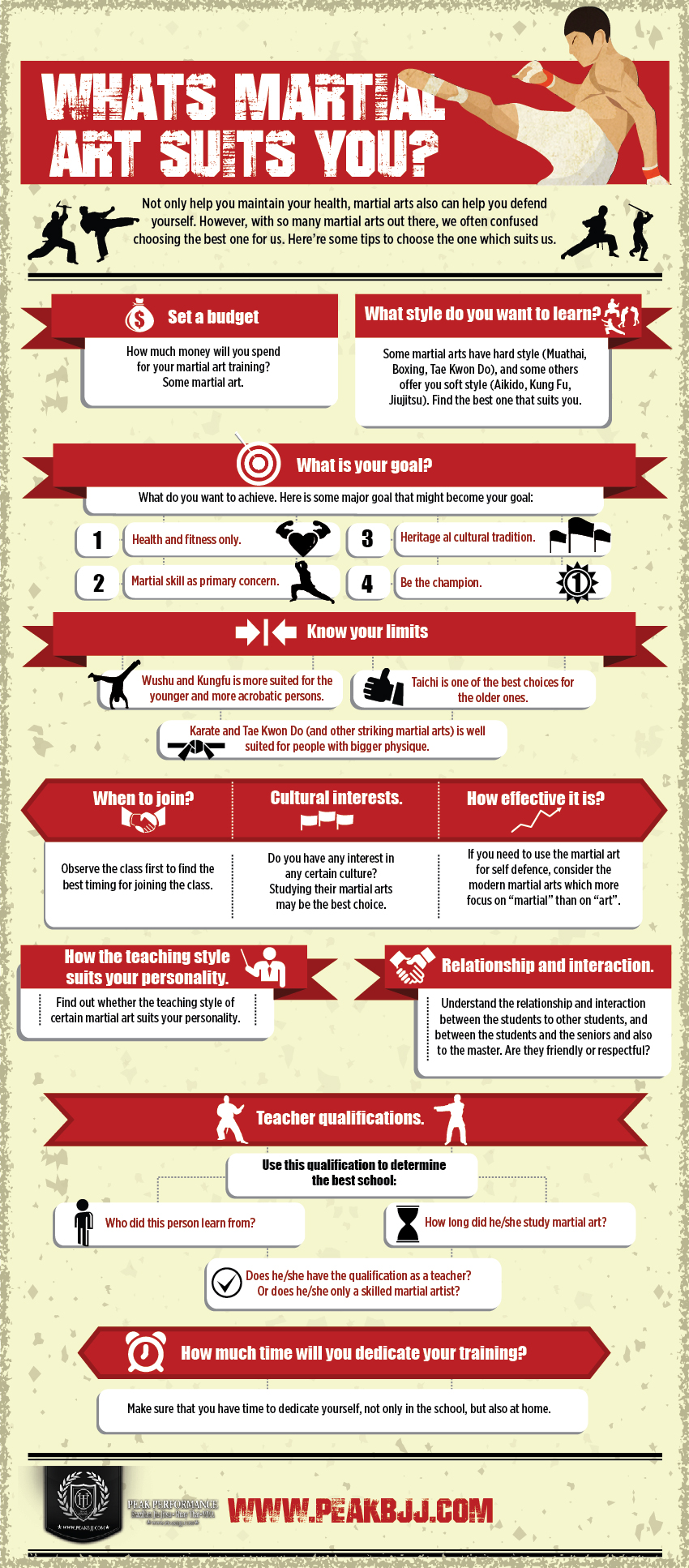Powerful Self-Defense Strategies Through Martial Arts Training
Powerful Self-Defense Strategies Through Martial Arts Training
Blog Article
Write-Up Written By-Hegelund Skafte
Have you ever found yourself in a situation where you felt intimidated and desired you understood how to protect yourself?
Visualize this: you're walking alone in the evening when unexpectedly, a stranger approaches you with aggressive intent. In such minutes, having a solid understanding of effective martial arts methods for protection can make all the distinction.
But what are these techniques? Which ones should you find out to ensure your safety? In this discussion, we will certainly discover a variety of methods, from strikes and kicks to joint locks and tosses, in addition to defensive maneuvers and gets away.
By the end, you'll have a clearer understanding of the skills that can equip you to shield on your own in possibly harmful situations.
So, let' what is tai chi martial arts in and uncover the globe of efficient martial arts methods for self-defense.
Strikes and Kicks
When it concerns protection, strikes and kicks are vital techniques that can effectively paralyze an enemy.
In a harmful scenario, your capability to strike with precision and power can be the difference in between escaping unhurt and becoming a target.
Strikes involve utilizing your clenched fists, arm joints, knees, or perhaps your head to supply effective impacts to prone areas of the body, such as the nose, throat, or groin.
Kicks, on the other hand, utilize the stamina of your legs to deliver strong strikes to a challenger's legs, torso, or head.
By combining appropriate strategy with rate and accuracy, you can promptly disable an attacker and create a possibility to run away.
Bear in mind to go for prone locations and use your body's all-natural tools to your benefit.
Joint Locks and Throws
After mastering strikes and kicks, you can additionally boost your protection abilities by discovering joint locks and throws. Joint locks are techniques that involve manipulating your challenger's joints, creating pain or immobilization.
Throws, on the other hand, involve utilizing your challenger's energy against them to take them down to the ground.
These strategies not just provide you with reliable ways to control and counteract an assailant, but they likewise infuse a feeling of confidence and empowerment.
By understanding joint locks and tosses, you'll be able to quickly and efficiently immobilize an opponent, providing you the advantage in any kind of self-defense scenario.
Remember, self-defense has to do with protecting yourself and others, and these strategies can help you do just that. So, why wait?
Beginning finding out joint locks and tosses today and be prepared for any type of situation that comes your way.
Defensive Maneuvers and Escapes
To properly defend yourself in a dangerous scenario, it's essential to understand defensive maneuvers and runs away. These techniques are made to aid you evade and get over an attacker swiftly and efficiently.
Click That Link is the avoid. By stepping sideways, academy of martial arts can avoid an oncoming strike and create a possibility to counterattack.
One more beneficial method is the duck and cover. This entails bending down and covering your head and vital areas with your arms. It can secure you from strikes and permit you to evaluate the circumstance and strategy your next step.
Additionally, learning runs away such as wrist grabs, bear hugs, and chokeholds can help you damage devoid of an attacker's grip and produce range.
Conclusion
On the planet of protection, understanding reliable fighting styles techniques is important. Whether it's the swift strikes and effective kicks that leave your challenger stunned, the competent implementation of joint locks and throws that immobilize them, or the protective maneuvers and runs away that grant you flexibility, these methods resemble a lively tapestry of security.
Like a proficient artist with a brush, you can paint a picture of security and self-confidence with every action you make.
